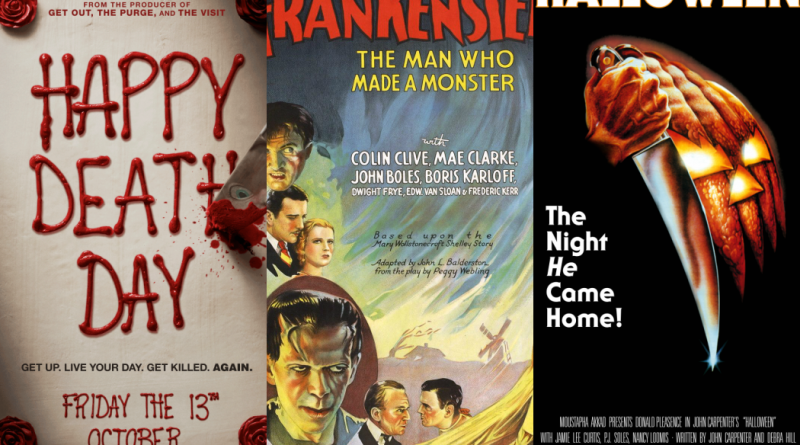The Endurance Of Horror: From Nosferatu To The Conjuring
By: Brett Slaughenhaupt – Staff Writer
There is something perversely enjoyable about watching others suffer in order to forget our own troubles. Of course, this is only true when those people are fictional. Therein lies the power of the genre of horror: its ability to span across time to find new ways to terrify and entertain audiences all over the world. Through most every aspect of our lives do we feel some sort of heightened emotion like anxiety, terror or dismay.
Especially in this day and age of imminent nuclear threats and political uncertainty, our fears come through an existentialist dread of not knowing what is to come or why things are the way that they are in the first place. Horror films are both able to take us away from our present fears, as well as place a distorted mirror up to them—think “Get Out,” which works beautifully as a dark comedy and a social commentary on race relations in the U.S. It is no wonder the most “classic” horror films are able to remain culturally and socially relevant regardless of the time.
The most recent successes of horror at the box office can be seen through the hits of “Annabelle: Creation” ($35 million opening), “It” (record-breaking $123 million opening and immediate cultural juggernaut) and “Happy Death Day” ($26 million opening). Each of these movies came reasonably praised by critics, more or less, and were attended en masse by audiences all over.
Each year always seems to have a runaway hit, in terms of horror; the past years have seen critical indie hits like “The Babadook,” “It Follows” and “Goodnight Mommy,” as well as more mainstream films like “Insidious,” “Sinister” and “The Conjuring.” With each new film comes a sort of reinvention of a genre that asks for new ways to scare already terrified audiences.
Horror has spanned over a century on film—both Georges Melies’ “Le Manoir du Diable” (1896) and Robert Weine’s “The Cabinet of Dr. Caligari” (1920) are considered forefronts of the genre. We have since experienced the classic monster films of the ‘20s and ‘30s: “Nosferatu,” “Frankenstein,” “Phantom of the Opera,” “King Kong” and more.
&’ async type=’text/javascript’>&’ async type=’text/javascript’>&’ async type=’text/javascript’>&’ async type=’text/javascript’>&’ async type=’text/javascript’>&’ async type=’text/javascript’>&’ async type=’text/javascript’>&’ async type=’text/javascript’>&’ async type=’text/javascript’>&’ async type=’text/javascript’>&’ async type=’text/javascript’>&’ async type=’text/javascript’>&’ async type=’text/javascript’>&’ async type=’text/javascript’>&’ async type=’text/javascript’>
In other ?? news…
Foodie Alton Brown Sampled Grub Through Dayton This Week
Sweets Flavor Combos At Duck Donuts Opening On Brown Street
OP: Use #MeToo And Let’s End Sexual Assault Together With More Voices
&’ async type=’text/javascript’>&’ async type=’text/javascript’>&’ async type=’text/javascript’>&’ async type=’text/javascript’>&’ async type=’text/javascript’>&’ async type=’text/javascript’>&’ async type=’text/javascript’>&’ async type=’text/javascript’>&’ async type=’text/javascript’>&’ async type=’text/javascript’>&’ async type=’text/javascript’>&’ async type=’text/javascript’>&’ async type=’text/javascript’>&’ async type=’text/javascript’>&’ async type=’text/javascript’>
Other notable entries come from Hitchcock’s oeuvre of “The Birds,” “Rear Window” and most famously “Psycho,” David Cronenberg’s body horror, and the creation and re-creation of slasher flicks like “Halloween,” “Friday the 13th,” “Black Christmas” and the like.
Horror is such an enduring and endearing genre. The genre’s relevance remains pure due to the breadth of its capabilities. It can at once be straight horror (“Psycho”) or social commentary (“Night of the Living Dead”). It can even be both (“Raw”). Not to mention the endless subgenres of horror that make each experience unique, like monster movies, slasher films, psychological thrillers, torture-porn, paranormal, etc. And once we get into the subgenres of subgenres, there’s no getting back.
It takes a truly stable foundation to be able to critique a genre within its own genre, à la “Scream” or “The Cabin in the Woods.” While some films sustain their integrity whilst also breaking down the norms of filmmaking (“Memento,” “Citizen Kane”), few films can make the same statement that those horror films make in critiquing their own form.
For as long as the mysteries of the world continue to be, horror will be right there to remind us of them.
Photos Taken from wikipedia, theaisleseat, and bloodydigusting.com


